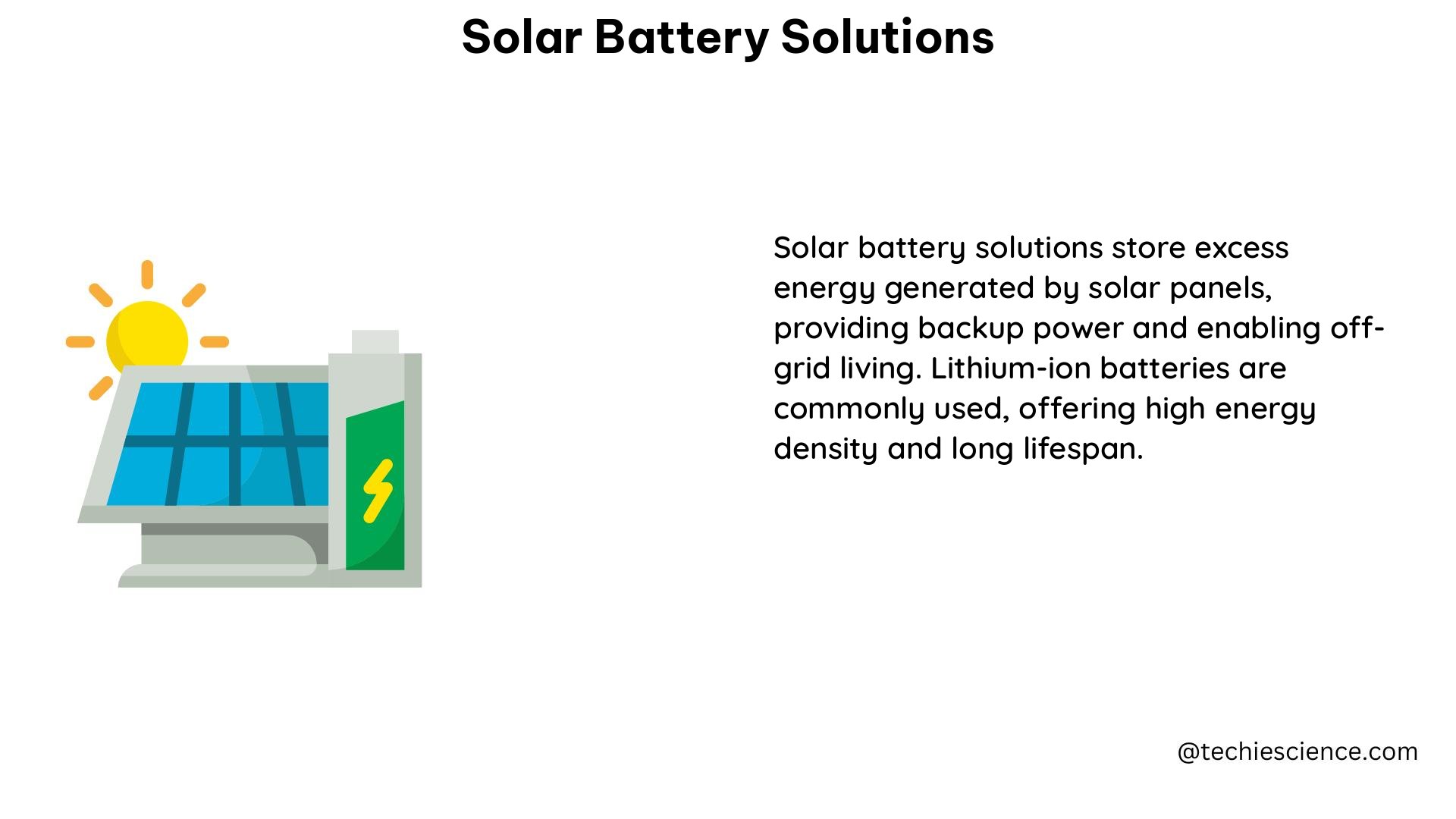Solar battery solutions offer numerous benefits, including improved solar yield, enhanced revenue streams, and energy independence. These solutions involve two key technical specifications: power (MW) and energy (MWh). Power represents the battery’s discharge rate, while energy indicates the battery’s total capacity or duration at full power. Proper sizing and integration of solar battery systems can lead to significant cost savings and increased energy efficiency.
Understanding Power and Energy Metrics
The power and energy metrics of solar battery solutions are crucial for determining the system’s performance and capabilities. Here’s a deeper dive into these technical specifications:
Power (MW)
- Power represents the battery’s discharge rate, indicating the maximum amount of electricity the battery can deliver at a given time.
- A higher power rating allows the battery to discharge more energy quickly, enabling it to meet peak demand or high-price hour requirements.
- For example, a 10MW battery can deliver 10 megawatts of power during discharge, making it suitable for applications that require rapid energy delivery.
Energy (MWh)
- Energy refers to the battery’s total capacity or the amount of electricity it can store and deliver over a specific duration.
- The energy rating determines the battery’s duration or how long it can sustain a given power output.
- Continuing the previous example, a 20MWh battery paired with a 10MW power rating would have a 2-hour duration (20MWh / 10MW = 2 hours) when discharging at full power.
Sizing Solar Battery Systems

Properly sizing a solar battery system is crucial for maximizing its benefits. Several factors must be considered when determining the appropriate system size:
Electrical Load Calculations
- Assess the total energy consumption of the household or facility to determine the required battery capacity.
- Consider peak and average energy demands, as well as seasonal variations, to ensure the system can meet the load requirements.
Solar Panel System Size and Production
- Evaluate the size and output of the solar panel system to understand the available energy for charging the batteries.
- Analyze historical solar production data to estimate the energy surplus that can be stored in the batteries.
Electricity Rate Structures
- Understand the local electricity rate structures, including time-of-use (TOU) pricing and demand charges.
- Size the battery system to optimize energy storage and discharge during high-price or peak demand periods, maximizing cost savings.
Depth of Discharge (DoD)
- Determine the appropriate depth of discharge for the battery system to ensure optimal performance and longevity.
- Typical lithium-ion batteries have a recommended DoD range of 80-90%, while lead-acid batteries may have a lower DoD range of 50-70%.
Overall Costs
- Consider the upfront capital costs, installation expenses, and ongoing maintenance and operation costs when sizing the solar battery system.
- Perform a comprehensive cost-benefit analysis to determine the optimal system size that balances performance and financial viability.
Whole-Home Backup Solutions
For homeowners seeking energy independence and reliable backup power, whole-home solar battery solutions are a viable option. These systems are designed to provide seamless power during grid outages, ensuring uninterrupted electricity supply.
FranklinWH Home Energy Management System
- The FranklinWH system offers a robust 13.6 kWh storage capacity per battery, with the ability to expand up to 204 kWh per intelligent controller.
- This modular design allows homeowners to scale the system as their energy needs grow, ensuring long-term energy security.
- The system’s advanced energy management algorithms optimize the use of stored energy, maximizing efficiency and cost savings.
Calculating Battery Capacity and Quantity
- Determine the total daily energy consumption of the household by analyzing historical usage data or conducting an energy audit.
- Use the formula: Total Daily Energy Consumption (kWh) / Battery Capacity (kWh per battery) = Number of Batteries Required
- This calculation will help you select the appropriate number of batteries based on the chosen vendor’s battery storage capacity.
Optimizing Home Energy Management Systems
Integrating solar and battery storage systems within a comprehensive home energy management system is crucial for maximizing efficiency, cost-effectiveness, and overall performance.
Enhancing Energy Production
- Implement strategies to increase solar energy generation, such as optimizing panel orientation, tilt, and tracking systems.
- Explore the use of high-efficiency solar panels or bifacial modules to boost energy output.
Considering System Architectures
- Evaluate different system architectures, including centralized, decentralized, or hybrid approaches, to determine the most suitable configuration for your home or facility.
- Assess the trade-offs between system complexity, scalability, and overall performance when selecting the appropriate architecture.
Selecting Appropriate Battery Types
- Choose battery technologies that align with your energy storage requirements, such as lithium-ion, lead-acid, or flow batteries.
- Consider factors like energy density, power density, cycle life, depth of discharge, and operating temperature when selecting the battery type.
- Ensure the battery system is compatible with your solar panels and energy management software for seamless integration.
By mastering these technical aspects of solar battery solutions, you can unlock the full potential of your renewable energy system, maximize energy efficiency, and achieve greater energy independence.
References:
- Battery Storage: How Can a Storage Facility Improve Your Solar Yield?
- Techno-economic analysis of a grid-connected solar photovoltaic and battery energy storage system
- Choosing the Right Size and Capacity for a Solar Battery System

The lambdageeks.com Core SME Team is a group of experienced subject matter experts from diverse scientific and technical fields including Physics, Chemistry, Technology,Electronics & Electrical Engineering, Automotive, Mechanical Engineering. Our team collaborates to create high-quality, well-researched articles on a wide range of science and technology topics for the lambdageeks.com website.
All Our Senior SME are having more than 7 Years of experience in the respective fields . They are either Working Industry Professionals or assocaited With different Universities. Refer Our Authors Page to get to know About our Core SMEs.